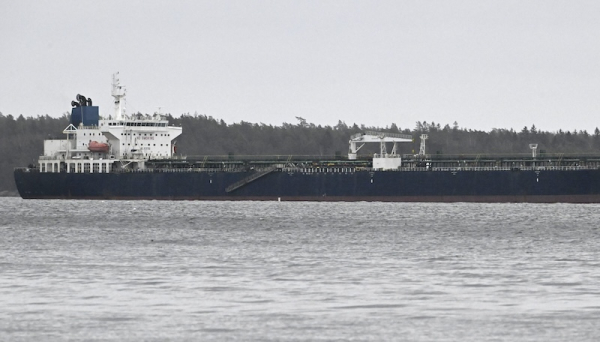
Cook Islands registered oil tanker Eagle S anchored near the Kilpilahti port in Porvoo, Finland on the Gulf of Finland on January 26, 2025. Photo: Heikki Saukkomaa / Lehtikuva
- Next Article Police break up school-end parties across Finland
Three crew members of the oil tanker Eagle S are suspected of aggravated sabotage and disruption of telecommunications following a police investigation into damage caused to critical infrastructure in the Gulf of Finland last December.
The Finnish National Bureau of Investigation (NBI) confirmed it has concluded its probe into the Cook Islands-flagged vessel, which allegedly dragged its anchor across the seabed for over 100 kilometres. Authorities suspect this action severed the EstLink 2 power cable and four telecommunications cables linking Finland and Estonia.
Yle Svenska, the Swedish-language service of Finland’s national broadcaster, reported that the charges relate to incidents that took place around Christmas 2024.
Three individuals, the captain, first officer and second officer, remain under suspicion. They have been barred from leaving Finland since the ship was detained in Porvoo in December.
“There are now three crew members suspected,” said the shipping company’s legal representative, Herman Ljungberg, speaking to Yle on Friday. “The matter has been handed over to a prosecutor.”
The identities or nationalities of the suspects have not been officially disclosed. The crew reportedly includes Georgian and Indian nationals. In January, the ship’s captain Davit Vadatchkoria gave an interview to Yle.
The Eagle S was seized while anchored between the EstLink 1 and EstLink 2 cable routes and remained in Finnish custody until March, when police completed the initial phase of their investigation. It has since been released.
The EstLink 2 electricity connection is a vital link in Finland’s power grid, managed by Finnish operator Fingrid. The cable transmits electricity between Finland and Estonia. Fingrid announced on Friday that repairs are nearly complete and that the connection is expected to be restored by 25 June, earlier than previously estimated.
The alleged damage to four separate telecommunications cables disrupted data traffic in the region and triggered an extensive international investigation involving both Finnish and Estonian authorities. The cables support services used by private firms, government agencies and critical communication systems.
Under Finnish law, aggravated sabotage can carry significant prison sentences, especially when it involves deliberate damage to national infrastructure. Disruption of telecommunications traffic, if deemed aggravated, is also treated as a serious criminal offence.
According to information obtained by Yle Svenska, a trial could begin in late August or early September, depending on the prosecutor’s decision.
The Finnish Defence Forces and Coast Guard monitored the situation closely after the initial reports of cable disruption, amid heightened tensions in the Baltic Sea. Authorities have not commented on possible motivations or whether there is evidence of intentional harm. The NBI has only confirmed the technical aspects of the damage and the status of the suspects.
The Finnish Ministry of Foreign Affairs has not issued further statements on the diplomatic implications of the case. The Estonian government has also refrained from public comment while legal proceedings are pending.
The incident prompted discussions at the EU level concerning the security of subsea infrastructure. Investigations are ongoing in several countries, including Estonia, Sweden and Germany, into similar cases involving possible cable damage in the Baltic region over the past two years.
HT
- Next Article Police break up school-end parties across Finland
Source: www.helsinkitimes.fi
